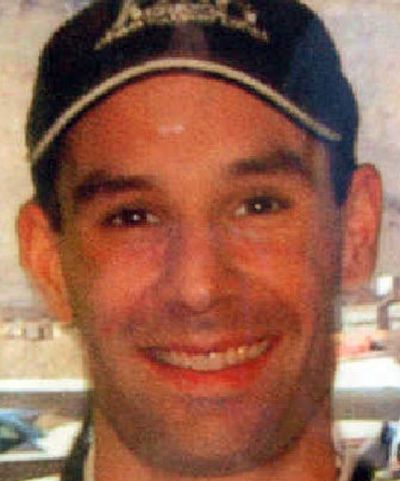Truth behind plane crash revealed

Nearly 16 months after their son’s airplane slammed into an Arizona mountain ridge, Jim and Carla Dvoracek know why.
Just as important, the Coeur d’Alene parents know now that 28-year-old Eric Dvoracek didn’t cause his own death scouting the skies above the Grand Canyon.
Faulty airplane parts with a 20-year history of complaints and warnings likely caused the December 2004 crash that killed the University of Idaho graduate, according to a just-released report from the National Transportation Safety Board.
“I’ve been going online about twice a week to check,” said Jim Dvoracek, Eric’s father. “We want people to know it was the airplane, not him.”
Eric Dvoracek likely lost control of the single-engine Cessna he flew for King Airelines, a tourism company, when the plane’s elevator separated from its trim tab control, the NTSB report concluded. Located on the tail of the airplane, those parts control lateral movement, pitch and lift.
The plane slammed nose-first into the rugged landscape near Meadview, Ariz., burrowing wing-deep into the earth before bursting into flames, the report said. Dvoracek, a new pilot accruing flight-time hours, had flown out alone to check weather conditions for aerial tours that day.
The elevator break likely was caused by moisture buildup that corroded the foam-filled trim tab controls. It was a problem first recognized in 1985, when Cessna Aircraft Co. officials issued a service bulletin warning plane owners.
Nearly 50 federal complaints about the problem were logged in the ensuing 20 years, the NTSB report found. The month after Dvoracek’s death, the Federal Aviation Administration issued a special bulletin recommending that the parts be replaced on some 16,000 Cessna planes still in use.
None of those warnings was mandatory, however – a fact that angers Carla Dvoracek, Eric’s mother. She wants the FAA to change the bulletin to an airworthiness directive that would require replacement.
“I think it’s outrageous that they have all these warnings and they won’t make a law to change it,” Carla Dvoracek said. “I’d hate to think if another young man had died and his family didn’t pursue it and it could have saved someone’s life.”
The Dvoraceks, who are divorced, are represented by a prominent Los Angeles law firm, Kreindler & Kreindler. Attorney Stuart R. Fraenkel said Friday that he plans to help the family force the FAA to issue a directive – and, very likely, to file lawsuits.
“A bulletin does not have the force of law,” Fraenkel said. “If the FAA was serious about this issue, if they recognized the catastrophic effects of this, they would issue a directive.”
An FAA aerospace engineer connected with the bulletin did not immediately return a call.
In addition to the general warnings about the defective plane parts, the NTSB report found that specific warnings about Eric Dvoracek’s plane went unheeded. At least three pilots employed by King Airelines had reported feeling noticeable vibrations during flight, a complaint common in elevator separation incidents, the report indicated.
The day before the crash, a pilot carrying several passengers on a sightseeing trip felt a similar vibration. However, his report was improperly logged in the company’s maintenance tracking system, the NTSB report noted.
“No corrective actions were taken,” it said.
David King, owner of the company based in Henderson, Nev., did not return a call Friday seeking comment. Sally Still, the firm’s terminal director, said Dvoracek’s crash was the firm’s only accident.
“Of course it was traumatic. Some of us haven’t gotten over it yet,” she said. “It’s devastating. It didn’t make sense. We just couldn’t make sense of it.”
A spokesman for Cessna Corp. said he wasn’t familiar with Dvoracek’s case and couldn’t discuss it. Doug Oliver couldn’t say exactly how the company decides to issue service bulletins, and he noted that the airline industry – unlike the auto industry – doesn’t conduct recalls for faulty parts.
“We consider service bulletins to be mandatory,” he said.
If the Dvoraceks do file lawsuits, it’s not clear whom they would sue. Airline industry rules prohibit lawsuits against manufacturers of planes older than 18 years, even if the planes are defective, Fraenkel said. The Cessna T207A flown by Eric Dvoracek was built in 1977.
Worker’s compensation rules prevent employees from suing employers, which would keep Dvoracek’s estate from suing King Airelines directly, the lawyer added. However, the company’s planes are owned by Sky Venture LLC, a related firm of which David King is manager.
Fraenkel and the Dvoraceks said financial gain isn’t the primary goal of any future action. “It’s changing the law,” Carla Dvoracek said.
For those who knew Eric Dvoracek – he grew up in Coeur d’Alene and graduated from high school in Spokane – the NTSB report is a confirmation of the young pilot’s professionalism.
“I had a good feeling it was (mechanical error) anyway,” said Ben Schumacher, 28, a Las Vegas helicopter pilot who was Dvoracek’s roommate.
But for the mother of the lively, brown-eyed young man who loved to fly, the release of the report this week inspired mixed emotions. On one hand, it proves that her son did nothing wrong, Carla Dvoracek said. On the other hand, it demonstrates that his death could so easily have been avoided.
“I was very glad they said what they said,” she said, tearfully. “But to think about how it was so preventable! I think I’m going to get really angry.”